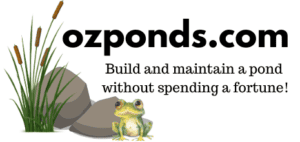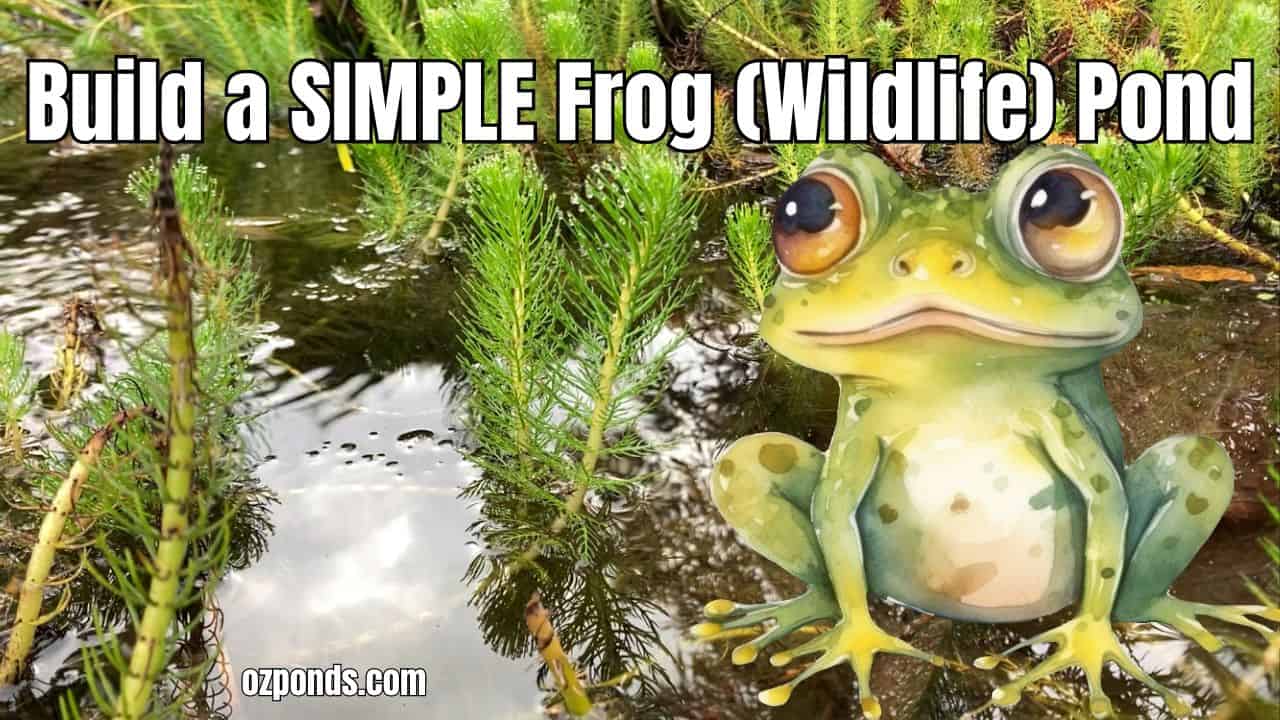Creating a wildlife or frog pond in your backyard is not only easy but also a great way to improve the biodiversity in your local area.
Birds, frogs, and insects all need water to survive, and with so many wetlands being destroyed, it’s rewarding to give back to nature by creating a small pond or stream.
The best part? It doesn’t have to break the bank—or your back!
If you prefer video content here’s a video I made on the topic:
Why Build a Wildlife Pond?
Whether you live in a city or the countryside, adding a small pond to your yard can provide a much-needed oasis for local wildlife. Frogs, birds, and insects are drawn to these water features, offering them a habitat to thrive in.
Like I already mentioned in a world where natural wetlands are being lost, creating even a small pond can help balance the scales.
Pond Design Tips: Start Small and Simple
Wildlife ponds, especially frog ponds, tend to be relatively small.
I live in Southern Australia, where our winters are cold by local standards but mild compared to North America or northern Europe. Even in shallow ponds, I don’t worry much about them freezing solid—maybe just a thin layer of ice overnight.
If your pond is small and shallow, placing it in a shaded area has multiple benefits:
- Cooler Water in Summer: Shaded water stays cooler, which helps the pond hold more oxygen.
- Preventing Algae: Algae thrive in warm, sunny conditions, so shade helps keep algae growth under control.
- Winter Protection: Shade can also reduce the likelihood of freezing during cold nights.
You’ll also want to design the pond so that frogs and other wildlife can easily access it. For example, toads in my area tend to amble along the ground and aren’t great climbers, so they need help getting in and out of the water.
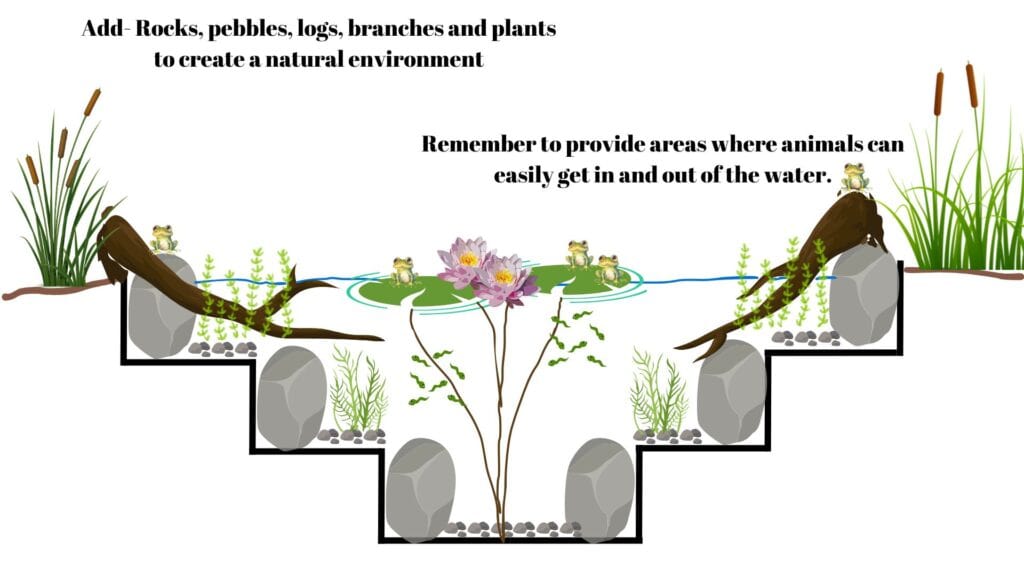
On the other hand, frogs are much better climbers and jumpers. Including gradual slopes or rocks can help all critters safely enter and exit the pond.
Creating a Natural Habitat
To make your pond a haven for wildlife, it’s important to include areas for hiding and breeding. Consider adding rocks, pebbles, plants, branches, and logs. These elements create shelter and make the pond feel more natural.
For the pond itself, you don’t need anything fancy—just something that holds water. You can get creative and repurpose things like buckets, wine barrels, old bathtubs, or stock troughs.
If you want more design freedom, I recommend using a liner for a more natural look. For small ponds, cheaper liners like HDPE or LLDPE (Amazon link) are fine, but if you’re going for a long-lasting solution, EPDM is the way to go.
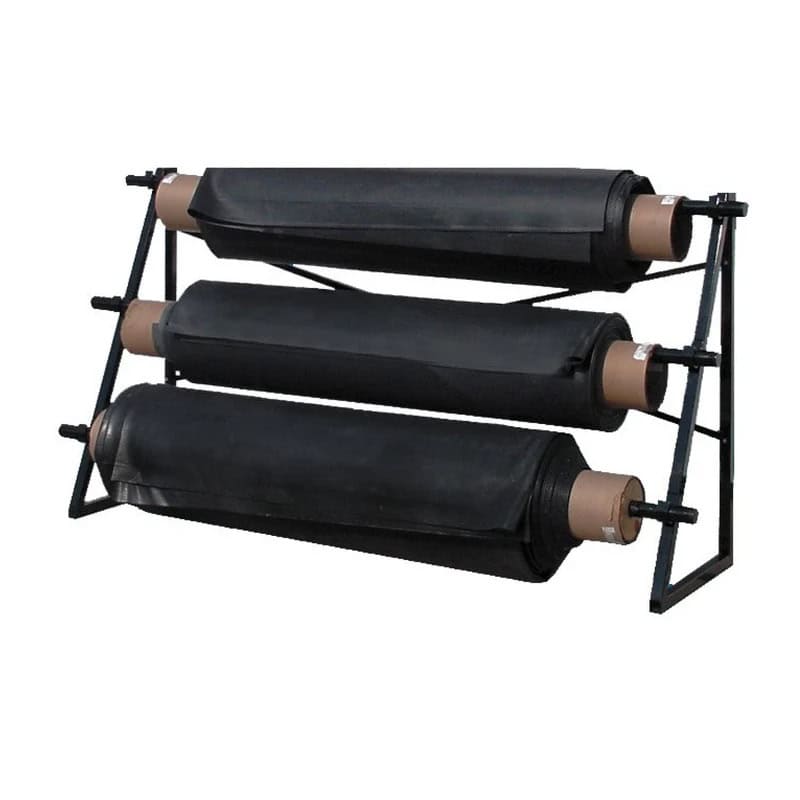
Pond Equipment in Australia
I’ve partnered up with Rock Around The Block, a leading pond retailer here in Australia. There is a discount code: OZPONDS
They stock high quality Liner, Underlayment, Pumps, Lightning and more. Click the button below to check out their range.
Maintaining Water Quality: Let Nature Do the Work
Water quality is crucial for your pond’s health, but you don’t need expensive filtration systems. Instead, let the plants and a good substrate do the job.
A layer of mud or dirt about 2 inches deep, topped with a layer of fine gravel, will create a perfect environment for beneficial bacteria and microorganisms to thrive.



Planting around the pond’s edges and in the water itself helps absorb excess nutrients, while a deep, muddy bottom offers a refuge for critters during extreme temperatures.
The deeper substrate also provides a more stable environment with fewer temperature fluctuations, which is essential for the pond’s health.
Here’s a video on me creating a small pond in a barrel with a dirt substrate:
What to Avoid: Choosing the Right Pond Companions
If you’re hoping to attract frogs and have lots of tadpoles, be cautious about what other animals you introduce into the pond.
In one of my mini ponds, I’ve added cherry shrimp, but I’ve noticed that tadpoles aren’t present—possibly because the shrimp consumed the frog eggs, or perhaps some other factor.
On the other hand, in another pond filled with native shrimp, there are hundreds of tadpoles, so it seems the local shrimp aren’t as predatory on the native frog eggs. I’ve also successfully kept small native fish like blue-eyes with tadpoles.
I guess my point is in nature its dog-eat-dog. Diversity is the best practice, that way every critter can hopefully carve out a little niche for itself, within the pond ecosystem.
Keeping the Pond Low-Maintenance
One of the joys of a small wildlife pond is that it requires very little maintenance. If algae start to take over, you can manually remove some, but don’t worry about clearing it all, especially if there are tadpoles in the pond—they’ll help keep it in check by feeding on the algae.
If you want to add a pump for circulation or the soothing sound of running water, keep it simple. Place the pump in a small pot and cover it with a coarse sponge to prevent debris from clogging it, and make sure you don’t suck in any small creatures.
Here’s a quick video on how I do that:
If you want to create a larger stream or pond ecosystem you might want to add and intake bay, to keep the pumps in. I’ve written an article and made a few videos talking about the benefits of intake bays and how they are constructed.
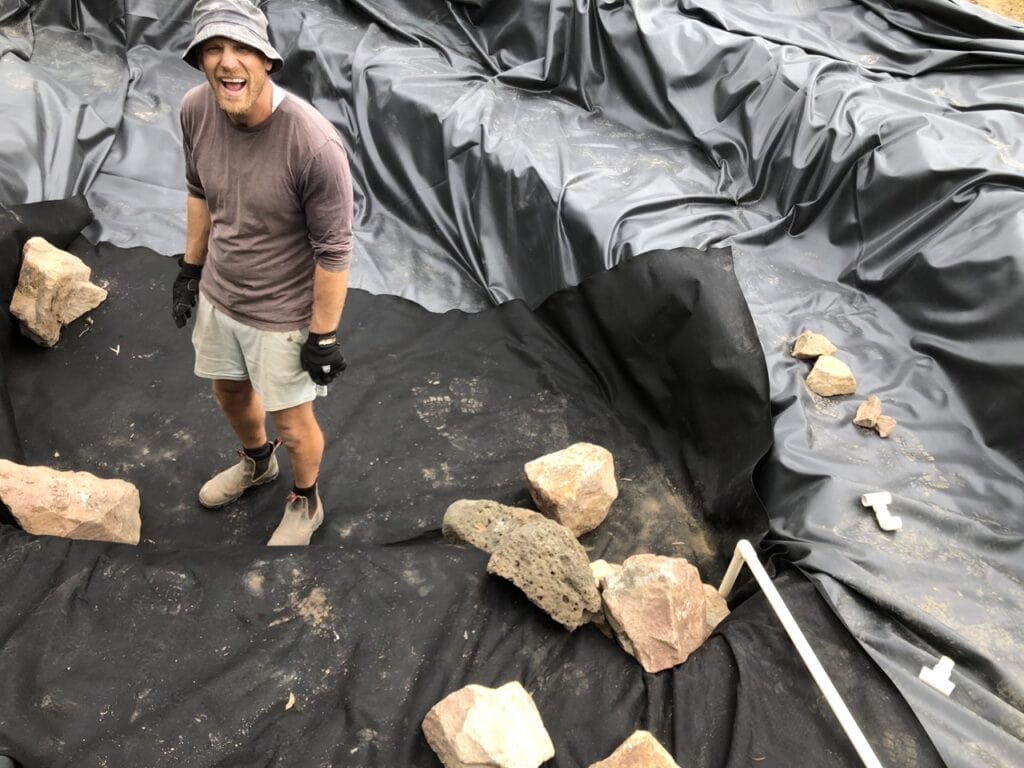
Blueprint I use to build my ponds
- All the numbers I use to design my ponds, delivered straight to your inbox
- These formulas have helped people all over the world build beautiful, low maintenance ponds, without spending a fortune.
- Access to a private community of like minded people and a chat bot that loves answering pond related questions.
Attracting Other Wildlife: Dragonflies and Mosquito Control
People often worry about mosquitoes breeding in ponds, but I’ve found that even in fishless ponds, I don’t have a mosquito problem.
Healthy, thriving ponds tend to attract dragonflies, whose larvae feed on mosquito larvae, keeping the population in check.
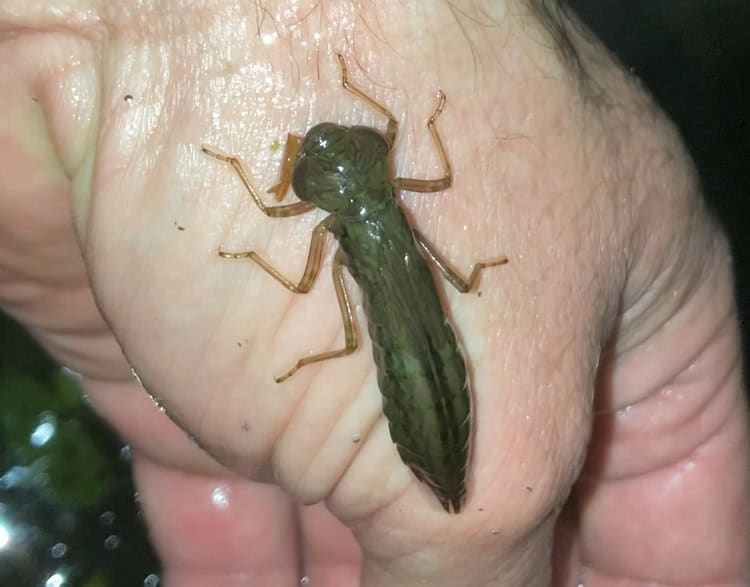
Final Thoughts: Building a Pond on a Budget
Whether you want a small wildlife pond or something bigger, building and maintaining a pond doesn’t need to be hard or expensive.
You can repurpose containers or go the liner route, and with the right design, you’ll create a haven for local wildlife that requires minimal upkeep.
I hope this guide gave you some inspiration and ideas for improving the biodiversity in your yard. Remember, even a small pond can make a big difference! Thanks for reading.
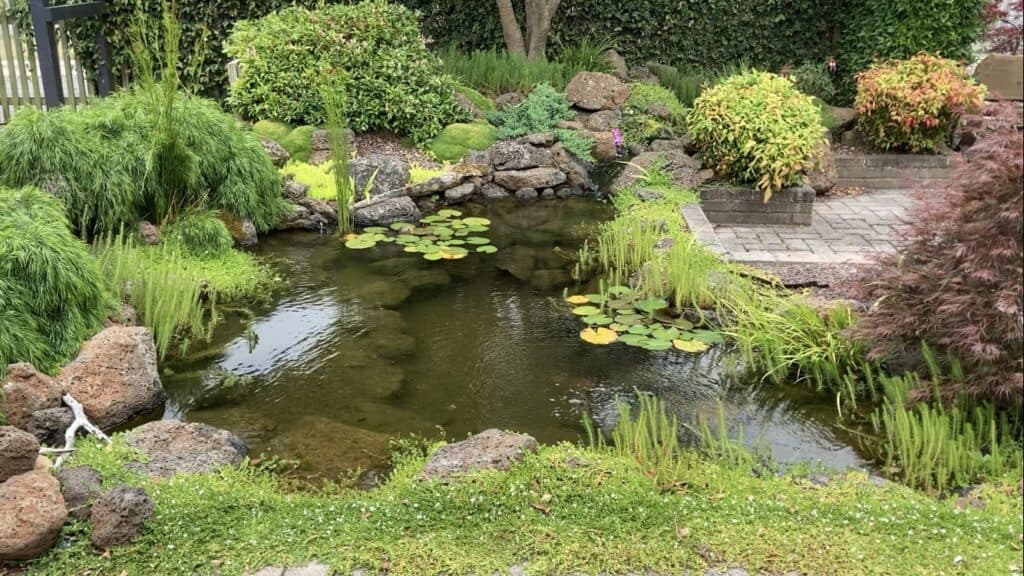
Join my free email list
If you would like to join my free email list click the button below.
I promise I won’t spam you, I’ll only send information I think can help you save money building and maintaining a pond.
